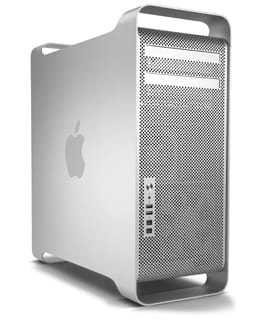 If you love Macs, it’s almost impossible to look at the 2013 Mac Pro without dropping your jaw, drooling a little, and thinking, “Want. Want so badly.” And that’s understandable. It’s a powerful machine with a sleek new design that’s perfect for professionals across the creative spectrum.
If you love Macs, it’s almost impossible to look at the 2013 Mac Pro without dropping your jaw, drooling a little, and thinking, “Want. Want so badly.” And that’s understandable. It’s a powerful machine with a sleek new design that’s perfect for professionals across the creative spectrum.
But the thing is, it’s not like creative professionals just started using Mac Pros in 2013. And if you dropped top dollar on a Mac Pro anytime in the past few years, the idea of investing several thousand more dollars in the latest model might not seem that attractive to you. On the other hand, nobody wants to be left behind. It’s competitive enough out there on a level playing field.
That’s where OWC comes in. If you make your living in graphic design, video editing, or any other visual medium, you’re going to want to keep reading. We’ll show you how you can bring your 2009-2012 Mac Pro up to par with many GPU based tasks without breaking the bank.
OWC’s benchmark testing has revealed that a 2009-2012 Mac Pro can be upgraded to perform on par with the 2013 Mac Pro in many GPU based tasks and in some cases, even outperform it. Lets take a look at some of the options OWC has to help make your older Mac Pro the powerful machine you need to express your creativity.
Onward and Upward with OWC’s Mercury Accelsior_E2
The Mercury Accelsior_E2 PCI Express SSD will give you incredible speeds if you’re looking to upgrade your 2009-2012 Mac Pro. But you don’t have to take our word for it. According to this About.com review, OWC’s Mercury Accelsior_2 ” may be one of the best performance and storage upgrade options for Mac Pro owners.”
It’s hard to argue.
The Accelsior_E2 brings blazing fast PCIe SSD performance to your Mac Pro’s applications, processing and booting. The Accelsior_E2 provides two OWC SSD blades and gives you RAID-like data redundancy for protection and reliability. It’s perfect for anyone who uses large video files and values performance and space above all else. This exceptional PCIe SSD provides up to 960GB of internal storage and lets you add up to 32TB of external storage.
The Accelsior_E2 can be purchased without the internal SSD blades installed, but most users will probably benefit from our configuration. And don’t just take my word for it. Check out the Mac Observer raving about the Mercury Accelsior_E2’s speed.
Easily Improve Your Graphic Quality [October 2017 update]
Note: The original content in this section was replaced by MacSales.com technical staff to reflect recent changes in the Mac Pro GPU landscape, particularly as it pertains to NVIDIA GPUs.
April 2017, NVIDIA announced that it would offer new drivers for Mac users who want to benefit from the latest GPUs built on the ‘Pascal’ architecture. These GPUs include all editions of the following base models:
- Titan Xp
- GeForce GTX 1080 Ti
- GeForce GTX 1080
- GeForce GTX 1070
- GeForce GTX 1060
- GeForce GTX 1050
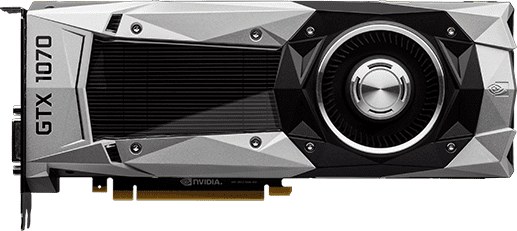
More Memory, Less Problems
Of course, the easiest way to improve an existing system is by adding memory, which is an OWC specialty. OWC’s memory upgrades ensure you can store your biggest projects without impacting performance. And thanks to our handy install videos, it is incredibly simple to install your new memory upgrade all by yourself. It’s so easy a caveman could probably do it if for some reason a caveman had a need to upgrade his Mac Pro.
In addition to being a great way to quickly upgrade your system and easy to install, you can rest easy knowing you are investing in the highest possible quality memory available. All OWC memory upgrades meet or exceed manufacturer specs, and every single unit is in-house lab tested to guarantee the highest possible quality. In addition, OWC memory upgrades are backed by industry leading lifetime, advanced replacement.
It Just Makes Sense
As you can see, there is no reason to abandon the trusty Mac Pro you’ve been using the past few years. Sure, the 2013 Mac Pro is an amazing computer, and it looks awesome. But considering all the options OWC offers to upgrade an existing 2009-2012 Mac Pro, it’s pretty clear there are other attractive options for keeping up with the Joneses.
If you want to build a comparable system for a lot less cash, you owe it to yourself to let OWC help you upgrade. There really isn’t a better way to get the most out of your pre-2013 Mac Pro.
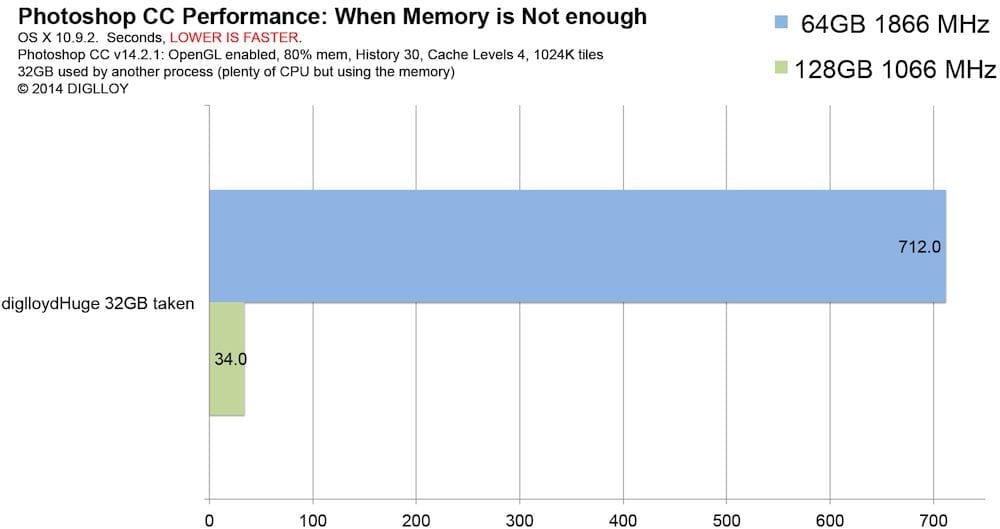
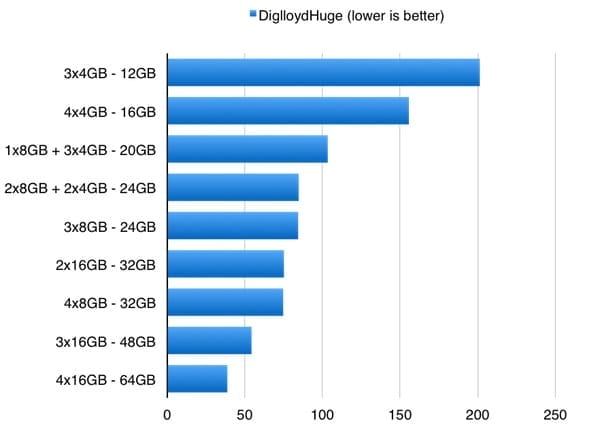
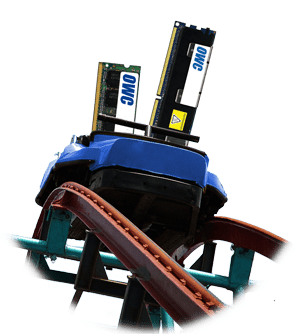
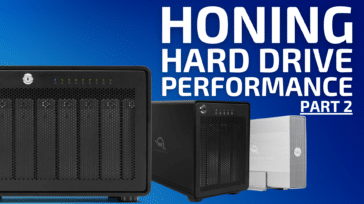
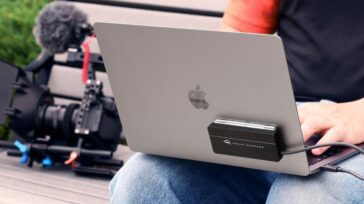

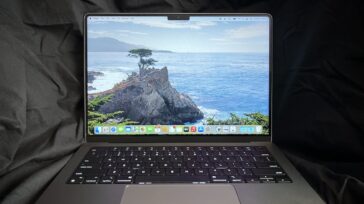


So no hope for my early 2008 Mac Pro.
And it looks like a ‘new’ replacement would be 4+ years old.
I am in the same boat. I have already installed additional RAM and an SSD; it runs great! I wonder if there is any way to upgrade the OS to High Sierra.
Hi,
Could you please update this with regard to the new High Sierra supporting external video cards, NVidia releasing mac drivers, and how this all would affect old Mac Pros 2012 and older? I believe this means I should be able to buy one of the newer NVidia cards and install it right inside my machine (without the external enclosure) assuming I don’t buy one that needs the extra power requirements.
I’m not looking to upgrade to the best video card (probably the Titan) as I don’t need that much, but it would be nice to upgrade to one of the newer Nvidia cards.
Thanks
Hi, Jeff. Thanks for the suggestion! Our technical team has updated the GPU section of the article.
… i just installed sonnet tempo ssd pro plus with 2 ssd in stripped. and my bench mark actually went down from just my one ssd in drive bay 1 and thats with all my perfs unplugged and all other drives pulled. not impressed
Your article refers to 2009-20012 machines.
What about my old 2008 3,1 Twin Quad 3.0Ghz machine ?
I guess your options above, will be just as suitable or was there some major architecture change that makes my 3,1 incompatible?
Got 28Gb RAM and the bog standard 2600 GPU plus a PC GeForce 4870 that I flashed to EFI support.
Will this Saphire HD7950 run on my machine ?
Hello Neil Paisnel,
The Saphire HD7950 is not compatible in the MacPro 3,1 model.
The options in this article, excluding the Saphire HD7950, will still be suitable and make this MacPro run at much greater speeds.
You can get a modern nVidia card to install in your 3,1. There has been nVidia GPU support for a couple OSX versions now. Try to get the reference model (even if it’s from a manufacturer like EVGA, it’s still better to try to get their reference version).
I’ve seen people put cards like the GTX 980 in a 1,1 but there are minor issues.
Obviously, the main issue is that it isn’t an officially supported card so it won’t show boot. Another issue is the potential for Apple to remove support in future versions of OS X.
However, it’s quite possible to get a great amount of life out of a 1,1 or 3,1 machine.
I actually just purchased a 1,1 with a 5770 and 10 GB of RAM installed for $290 shiped. I bought the x5365s ($100 for 2) to bring it to 3 GHz 8 core and I’ll probably pick up an PCI-E SSD option in the future (currently have 4 250 GB 7200 RPM HDDs thrown into a RAID since I had them lying around).
I figured the 5770 was enough for me for right now. But, I originally planned on throwing a 970 into my machine. It’s probably the best price to performance card right now. If you can deal with not seeing boot options it might be the best choice for you.
I figure I did pretty well spent about $400 and ended up with a 3 GHz 8 Core Mac Pro w/ 10 GB of RAM and a 5770. My little brother is planning on building a maxed out one though (w/ 32 GB of RAM and a 970 or 980).
Hey guys – this article really got me excited as I’ve seen so many silver towers hit the used market lately.
There’s a lot of info out there on Nahalem VS Westermere but I’d love anyone to dive in and suggest what Mac would be the ultimate platform for speed and performance upgrades from OWC.
What’s your dream Mac machine ?!?!?!?
This article got my interest. I always looking for a newer replacement for my late 2009 i5 iMac. I am not a pro, I use my Mac mainly for CAS (computer audio), photo library (Aperture) and gaming in Windows. I already topped my iMac rams as well as changed my internal storage to SSD so that quite topped the possible speed of my old friend.
The new Mac Pro is very good especially the size. But the dual graphic card and limited expandability turn me down.
I really want to know if I follow this article to get a refurbished or 2nd hand Mac Pro and got the 7950, will I get a close gaming performance of the new Mac Pro? I know Mac never focus on gaming, but I do play a lot of game on my computer and I really enjoy using Mac OS whenever “not in gaming”.
There is still plenty of gaming power behind that unit, and should be more then plenty to play most of today and tomorrows games. However, without any of the new powerhouse games (Such as the new Snowdrop engine powering Tom Clancy’s the Division) are out at this point in time, its hard to gauge its real world performance. The low end dual gpu of the 6,1 , the D300, i believe is based off the same Pitcairn XT boards that are in the W7000. Which you can see here, https://www.youtube.com/watch?v=PhjCEDmU9jA, out performing nividias work horse GPU.( PC cards being tested)
How does that power translate to gaming graphics? Well…. it does, but not how one might think. In terms of performance for gaming the d300/w7000 about 13% lower than that of the HD7870 since it benefits from gaming related drivers pushing the hardware. now most of this info is valid on the PC world, i can’t imagine that much changed moving over to the mac world. the mac pro has always been about being a workhorse not a gaming machine. So its no wonder apple choice work-flow related cards intstead of gaming performance architecture cards.
Bottom Line: the 4,1 / 5,1 is still a valid gaming machine and possibly even more so with a gaming-orientated graphics card.
I’m finding this a very relevant topic, but a hard one to get definitive answers on.
I’m a video editor, I’ve been working off mbp but I am building a more serious workstation. My inclination is to buy a Mac Pro 5.1 (12core) second hand, to drive 2 normal sized monitors for now. Running Avid Media Composer, davinci resolve, and Adobe Premiere/AfferEffects/PS.
This will be a fine workstation, but I’m wary about 4k workflow as its definitely coming, and I don’t want to buy into premature eol on this. No thunderbolt 2 might be another issue for monitoring.
New Mac Pro supports 4k monitors natively.
Resolve is GPU intensive, was CUDA but is now Open GL biased i think?
Adobe is CUDA biased I think?
Anyone there up on video intensive work, and keeping a pre-trashcan Mac Pro relevant in the 4K world? Possible? What is required?
(reminder, I’m not FCX based)
I upgraded to the 7950 from OWC about a year ago.
Overall any noticeable performance gain (yes there are some excellent gains) over the 5870 is overshadowed by the poor quality, and buggy GPU drivers, which still haven’t been updated to address problems long known.
My 7950 is sitting in its box having been replaced by adding a second 5770.
(OWC doesn’t accept 7950’s for trade-in like they do for Apple stock equipment.)
Despite the poor performance of a single 5770, the dual configuration works remarkably well – playback of 4k video is smoother than either the 5870 or 7950 & exporting of files from FCPX much faster.
Remarkable given the price points.
The only downside is giving up slots for a 2nd GPU that had had Accelsior cards in them.
Hi, I recently got your Sapphire HD 7950 and 64g RAM and Accelsior_E2 PCI Express SSD. This is working well. Very fast. OWC is great. BUT Something in the article caught my attention. It said: “you can add the Sapphire HD 7950 to your existing video card for additional GPU performance”. This is interesting. I still have my old Video card – took it out for the 7950. How can I add the old card back into the system to Perhaps take advantage of dual card capabilities of Final Cut X. I don’t see other internal power feeds for the old card’s power cables. Plugged the 7950 into the power ports the old one used. My Mac Pro is 5,1. If installed – and used – Will two cards over burden my power supply or cause over heating? Thanks for any insight you can provide. JC
JC, you hit it on the nail there… power requirements. But also, give pause to the idea of pairing the 7950 with the card it replaced. Even on Mavericks with multiple GPU support in FCPX, this only appears to work (well) if the GPUs are matched. So your new 7950 paired with anything else would possibly be no faster than a single 7950 even if you performed a mod to increase the available power required to drive both GPUs.
You would need to have a power solution that could support 2 7950’s & that goes beyond anything Apple supports.
Last thing you want is to fry your system.
Apple does support dual 5770’s – 2 of those can outperform a single 7950 using the latest FCPX on Mavericks, but it depends on what you are doing… tests will show the single 7950 is better at some things, and the dual 5770’s better at others – difficult to make general judgements on any arbitrary test unless that test matches your intended use.
Thanks Matt. I thought there might be issues like you mentioned. I will hold with what I have, the added Ram, 7950 and the PCI SSD proved a solid upgrade. Didn’t want to get the first new redesign of the Pro, my up grade will extend my old Pro 1-2 years, by then the New Pro design will be more refined. Thanks again for your comments and insights.
What would be best for someone looking to take a few years and really learn Photoshop and the art of photo retouching starting from the basics. I will utilizing several online (pay and free) sites as well as books and DVDs to help me learn. I’m curious as to whether I should do a new iMac and upgrade it with OWC parts, a 2009-2012 Mac Pro updated with OWC parts, or a new Mac Pro? I really want something that will last for three to four years and am looking to spend perhaps from $3,000 to $5,000? Maybe willing to spend more if significant improvement is gained or if I’m able to use the system over a longer period of time. Thanks!
Hi Ryan. We would be more than happy to assist you in getting the right tools and upgrades you need. Please feel free to contact us at 800-275-4576 or by email or Live Chat.
Apple have a nasty habit of obsoleting older versions of hardware after about 4 to 5 years.
What do you think will most likely be the weak point of say the MacPro4.1 or 5.1 that will prevent a newer version of OSx from being installed?
Any thoughts